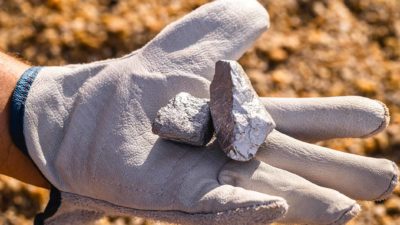BHP Group Ltd (ASX: BHP) shares are bucking the wider selling trend today.
The S&P/ASX 200 Index (ASX: XJO) mining giant closed yesterday trading for $46.18 a share. At the time of writing, shares are trading for $46.21, up 0.1%.
That's no massive gain.
But it certainly beats the 0.6% loss posted by the ASX 200 at this same time.
And it comes despite a 3.6% overnight retrace in the iron ore price. The industrial metal is currently trading for US$109.20 per tonne.
That's today's price action for you.
Now, here's why BHP shares are unlikely to have any significant exposure to lithium in the years ahead.
Why lithium is off the ASX 200 miner's menu
Addressing the American Chamber of Commerce in Australia yesterday, Geraldine Slattery, president Australia for BHP, made it clear that BHP shares would continue to focus on the core minerals that have made the miner so successful.
Those include iron ore, metallurgical coal, copper, nickel and potash. Lithium was notably missing.
Pointing to the global push to electrification, Slattery said, "The energy transition cannot happen without mining."
Which should bode well for the long-term outlook for BHP shares.
According to Slattery:
The need for everything from batteries to electric vehicles to wind turbines to the infrastructure of electrification is creating unprecedented demand for what we produce today…
This will drive demand for critical minerals such as copper and nickel.
Slattery noted World Bank research on the mineral intensity of 10 low-carbon energy technologies. She said this "found copper was essential to all 10 – and nickel was essential to 9-out-of-10".
BHP estimates that the massive growth of EVs across the world will require up to 26 million tonnes of copper and 15 million tonnes of nickel by 2030.
"That does not include the materials that will be required to charge them, or produce the zero-carbon electricity that will power them," Slattery said.
Lithium is, of course, another critical metal in this transition, required in most every EV and home storage battery.
But Slattery said BHP shares won't be getting an exposure to lithium.
As The Australian Financial Review reports, that's because the big miner doesn't believe it can construct lithium mines at the same large scale and accompanying low costs that have made its iron ore and coal segments so profitable.
According to Slattery:
We look at the lithium industry – delighted to see others playing in that – but we are putting our focus on copper and in nickel, and continuing to invest in iron ore [which] will continue to be in demand we see for decades.
But nickel, copper and potash is where we think we have most to add – not to say that some of those other commodities are not very important, just not in our particular specialist wheelhouse.
How have BHP shares been tracking?
BHP shares are up 20% since this time last year when they were trading for $38.32 apiece.








